How to save cucumbers from anthracnose?
Cucumber anthracnose has another name - copperhead. The disease belongs to fungal infections, its causative agent is the pathogenic fungus Colletotrichum. Simultaneously with the cucumber, squash, legumes and melons, grapes, currants, gooseberries, and raspberries can suffer from anthracnose. The disease is considered harmful and intractable, therefore, if symptoms appear, treatment should be started immediately. Prevention plays an important role in preventing the development of anthracnose.
Contributing factors for anthracnose infection
Heat and humidity contribute to the spread of the fungus. That is why cucumbers grown in greenhouses are more likely to get sick. However, open field cucumbers can also be affected. Fungal spores are spread by wind, rain, insects. In winter, sclerotia are preserved in plant debris, on the details of the greenhouse frame.
With the arrival of spring heat, the spores fall on the cucumbers and begin to germinate. Seeds collected from plants suffering from anthracnose can act as a source of infection.
The following factors contribute to the spread of fungal infection on cucumbers:
- acidity of the soil;
- lack of phosphorus and potassium in the soil;
- weakened immunity.
Infected plants inevitably reduce the ability to bear fruit, and the quality of vegetables deteriorates.
Manifestations and symptoms
The incubation period of the disease lasts from 4 to 7 days. At a temperature of 20-25 ° C and a humidity of 90%, this time is reduced to 3 days. The disease can manifest itself at any stage of the cucumber growing season. The fungus is capable of infecting any aerial parts of the plant.
The symptomatic picture is a whole complex of manifestations:
- Initially, the leaves are covered with small yellow or brown specks with a dark border.
- Soon, the same marks appear on the stems.
- A little later, the spots merge, the leaves turn completely yellow.
- A purple border may appear around the affected areas.
- The sheet tissue becomes thin and easily damaged.
- Affected stems break.
- In dry weather, diseased leaves crack, and in wet weather they can rot.
- If the disease develops at the fruiting stage, the ovaries are affected. The fruits slow down their development and later rot.
At the stage of the appearance of yellow dots, anthracnose can be easily confused with other diseases or problems caused by violation of agricultural technology. The characteristic symptoms appear later. In advanced cases, cucumber bushes may die.
Preventive actions
To save the harvest, summer residents should take care of preventive measures to prevent anthracnose in advance.
First of all, you need to choose the seeds of disease-resistant varieties. Hybrids resist well the copperhead, for example:
- Dragoon F1;
- Noble F1;
- Spring F1;
- Country F1;
- Swallow F1;
- Hector F1 and many others.
In addition, you must:
- observe the rules of crop rotation and change the place for planting cucumbers every 2-3 years;
- carry out deep digging of soil in spring and autumn;
- regularly clean the area from plant debris;
- replace the top layer of earth with a thickness of 10 cm in the greenhouse and shed the soil before planting with a solution of potassium permanganate or "Fitosporin";
- in spring and autumn, treat the walls of the greenhouse structure with Bordeaux liquid;
- monitor the humidity level in the greenhouse and regulate it by airing;
- dressing cucumber seeds before sowing;
- regularly disinfect the soil and garden tools.
After the seeds are sown, the seedlings should be inspected regularly for anthracnose-infected plants. Diseased seedlings are immediately destroyed, healthy specimens are treated with fungicides.
Fighting anthracnose
If, despite all preventive measures, the cucumbers are affected by anthracnose, it is urgent to start fighting the disease. Folk remedies against this infection are powerless; they can be used only as an adjunct to fungicide treatment. For protection, cucumber bushes can be sprayed with a weak solution of potassium permanganate or powdered with mustard powder, wood ash.
The use of folk remedies is justified by the fact that cucumbers weakened by copperhead can get sick with other fungal diseases.
Agrotechnical techniques
In the case when signs of the disease appeared only on individual plants, the bushes should be carefully removed from the soil and burned, thereby saving healthy specimens from infection. When it comes to growing cucumbers in a greenhouse, you need to try to reduce the air humidity to 60% - this will stop the further development of the infection.
As an agricultural technique, you can apply root watering of infected bushes with 1% Bordeaux liquid. Pre-moisten the bed with plain water. After 2-3 hours, 1 liter of Bordeaux liquid is poured under each plant. This treatment is required to be carried out 2-3 times a week until the signs of the disease completely disappear.
Application of fungicides
Contact and systemic fungicides are used to treat fungal infections.
Drugs that have proven themselves in the fight against anthracnose:
- "Tiovit Jet". The preparation is based on sulfur, produced in the form of compressed granules, is highly soluble in water, does not have a phytotoxic effect. The fruits are allowed to be eaten the next day after spraying. Provides protection for 7-10 days. The solution is prepared from 30 g of the drug per 10 l of water. It is necessary to carry out 2-3 treatments.
- Previkur Energy. Systemic fungicide. Used for watering and spraying. The active substance easily penetrates into plant tissues, where it accumulates. In addition to suppressing the activity of the fungus, the fungicide stimulates the immune system of the plant. The working solution is prepared from 25 ml of the drug per 5 l of water. Previkur Energy does not harm plants. Processing is carried out every 10-14 days until the result is obtained.
- Abika Peak. A preparation based on copper oxychloride. Does not possess phytotoxicity, it is compatible with other fungicides. Does not affect the taste of the fruit. To prepare a solution, 50 ml of the fungicide is diluted in 10 liters of water. Three times processing is required.
- "Quadris". The Swiss drug, produced in the form of a suspension, has a wide spectrum of action. Does not harm the soil microflora. The active substance accumulates in the leaves and prevents the germination of fungal spores. "Quadris" is addictive, so it should be alternated with other fungicides. For use, 5 ml of the product is diluted in 10 liters of water. It will take 3 treatments.
All work with chemicals should be carried out using personal protective equipment (closed clothing, gloves, respirator, glasses). Plants are processed on cloudy days or in the morning, before the peak of solar activity.
Anthracnose on cucumbers cannot be ignored, the disease requires mandatory treatment and control. All infected plant residues are burned to prevent the spread of the fungus to other crops. Preventive measures will help reduce the risk of a copperhead.

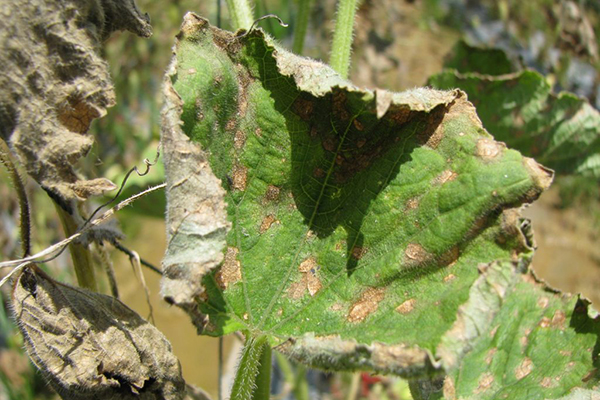
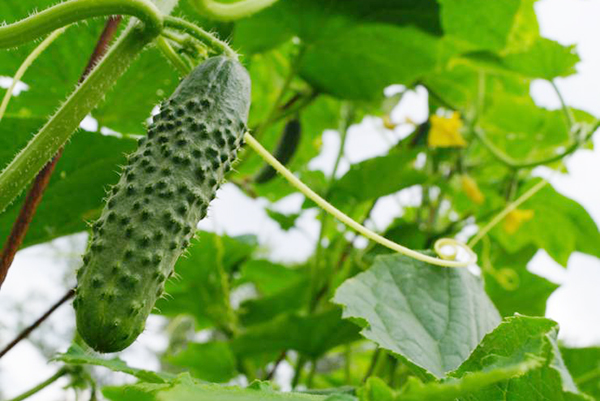
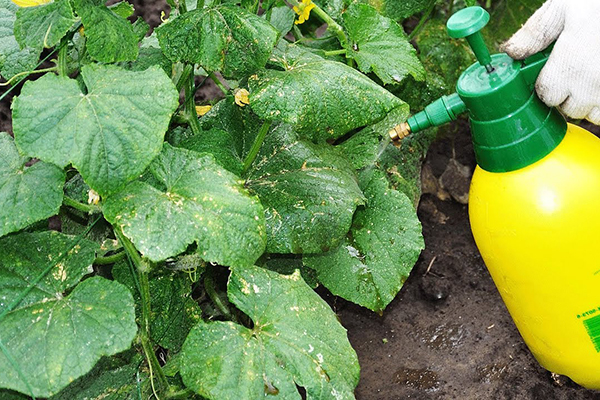
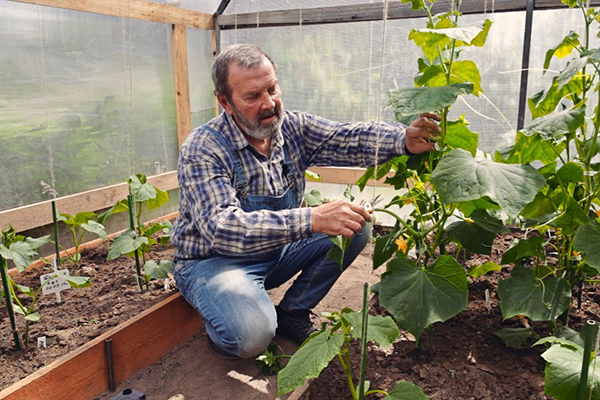
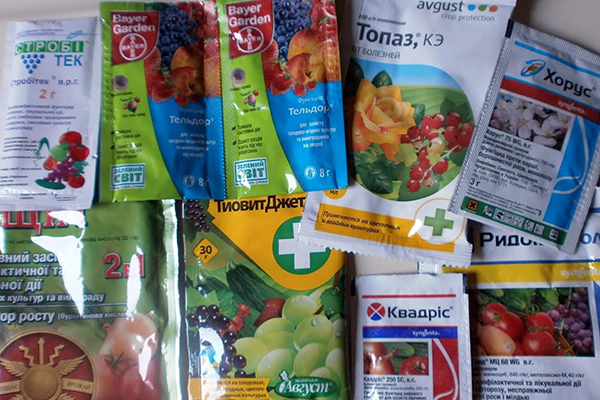

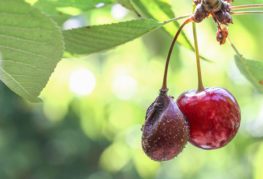
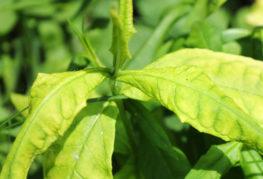
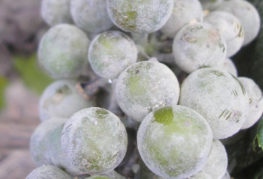
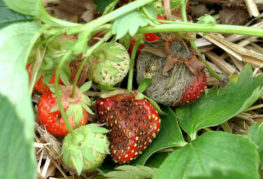
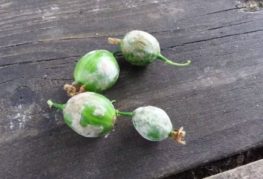
and will be published shortly.